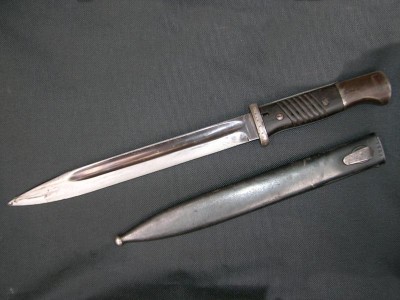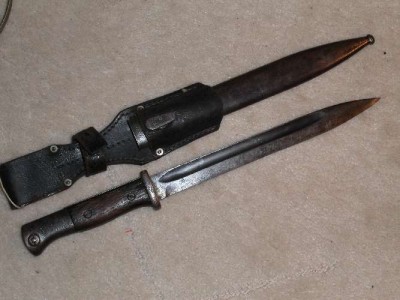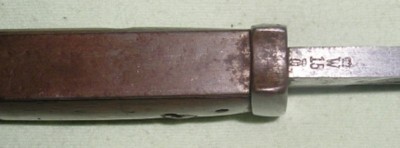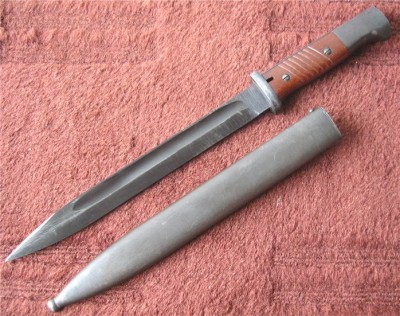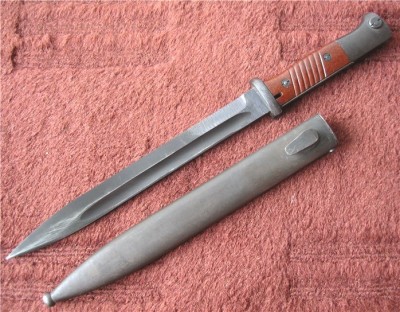Seitengewehr 84/98
bayonet vz.84/98 for Mauser 98k rifle
A bayonet used by the German forces during WW2. There are three basic models of this weapon:
1. model
had wooden blades and a variant with a saw on the back of the blade was also produced (only for this model).
The 2nd model
differs from the first model by the protective plate on the back of the handle
3rd model
began production just before World War 2. It has a protective cover on the back of the handle just like the 2nd model, but differs with more economical bakelite blades.
The knife blade is wedge-shaped, double-edged downwards, transitioning into a distinctive central point. The bayonet was carried in an all-metal scabbard with a hook on a leather sling.
bayonet vz.84/98 for Mauser 98k rifle
A bayonet used by the German forces during WW2. There are three basic models of this weapon:
1. model
had wooden blades and a variant with a saw on the back of the blade was also produced (only for this model).
The 2nd model
differs from the first model by the protective plate on the back of the handle
3rd model
began production just before World War 2. It has a protective cover on the back of the handle just like the 2nd model, but differs with more economical bakelite blades.
The knife blade is wedge-shaped, double-edged downwards, transitioning into a distinctive central point. The bayonet was carried in an all-metal scabbard with a hook on a leather sling.
